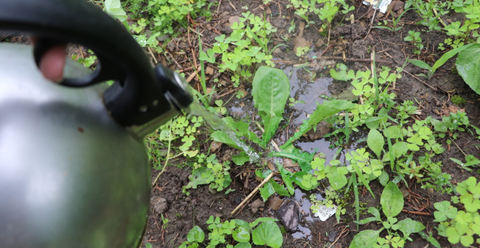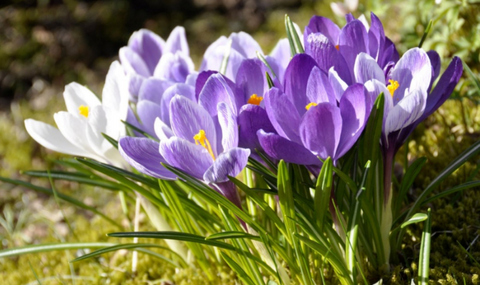Urban living often means limited outdoor space, but that doesn't mean you can't enjoy the benefits of gardening. With balcony gardening, urban dwellers can transform their small outdoor areas into lush green retreats. In this article, we'll explore various ideas and strategies for creating a thriving balcony garden, from assessing your space to selecting suitable plants and implementing sustainable practices.
● Assessing Your Balcony Space
● Selecting Suitable Plants
● Container Options and Arrangement
● Soil and Fertilizer Requirements
● Watering and Drainage Strategies
● Maintenance and Care Tips
● Enhancing the Ambiance
● Sustainable Practices
● Community Gardening Initiatives
● Overcoming Challenges
● Conclusion
Assessing Your Balcony Space
Size and Layout Considerations
Before diving into balcony gardening, take stock of your balcony's dimensions and layout. Measure the available space to determine how many plants and containers you can accommodate without overcrowding. Consider factors like door placement and furniture layout to optimize the use of space.
Sunlight and Shade Analysis
Observe the sunlight patterns on your balcony throughout the day. Note areas that receive full sun, partial shade, or full shade. This information will help you select plants that thrive in your balcony's specific light conditions.
Wind Exposure Evaluation
Assess the wind exposure on your balcony, as strong winds can damage delicate plants and dry out soil quickly. Consider installing windbreaks like trellises, screens, or tall plants to provide protection from gusts.
Selecting Suitable Plants
Container-Friendly Varieties
Choose plants that are well-suited to container gardening, such as compact varieties of herbs, vegetables, and flowers. Look for plants labeled as "patio," "dwarf," or "bush" varieties, as they typically perform well in confined spaces.
Herbs and Vegetables for Urban Gardening
Grow your own herbs and vegetables on your balcony to enjoy fresh, homegrown produce. Opt for culinary herbs like basil, mint, and rosemary, as well as compact vegetables like cherry tomatoes, lettuce, and peppers. These plants are not only flavorful but also easy to grow in containers.
Ornamental Plants for Aesthetic Appeal
Incorporate ornamental plants to add beauty and color to your balcony garden. Choose a mix of flowering and foliage plants to create visual interest and select varieties that complement each other in terms of height, texture, and color.
Container Options and Arrangement
Types of Containers
Select containers that suit your balcony's style and space constraints. Consider options like hanging baskets, window boxes, railing planters, and vertical wall gardens. Choose containers made from lightweight materials like plastic or fiberglass to reduce weight on your balcony.
Vertical Gardening Techniques
Maximize vertical space on your balcony by using trellises, wall-mounted planters, and tiered shelves. Vertical gardening allows you to grow more plants in a smaller footprint and adds visual interest to your balcony garden.
Creating a Cohesive Design
Plan the arrangement of your containers to create a cohesive and visually pleasing garden design. Group plants with similar light and water requirements together, and vary the heights and textures of plants for added dimension. Incorporate decorative elements like sculptures, garden ornaments, and colorful pots to enhance the overall aesthetic.
Soil and Fertilizer Requirements
Choosing the Right Potting Mix
Select a high-quality potting mix that is lightweight, well-draining, and nutrient-rich. Avoid using garden soil, as it can become compacted in containers and hinder root growth. Look for potting mixes labeled specifically for container gardening, and consider adding perlite or vermiculite for improved aeration and drainage.
Organic Fertilization Methods
Feed your plants with organic fertilizers to provide essential nutrients without the risk of chemical buildup. Options include compost, worm castings, fish emulsion, and seaweed extract. Apply fertilizers according to package instructions, and supplement with organic matter like compost or mulch to improve soil fertility.
Composting for Sustainable Gardening
Reduce waste and improve soil health by composting kitchen scraps and garden debris. Start a compost bin or vermicomposting system on your balcony to recycle organic matter into nutrient-rich compost for your plants. Use compost as a top dressing or incorporate it into potting mixes to enrich the soil. The following content also has some reference value for raised garden beds.

Watering and Drainage Strategies
Proper Watering Techniques
Water your plants deeply and thoroughly, ensuring that water reaches the roots and drains freely from the bottom of the containers. Water early in the morning or late in the evening to minimize evaporation, and adjust watering frequency based on weather conditions and plant needs.
Importance of Drainage in Container Gardening
Ensure proper drainage in your containers to prevent waterlogging and root rot. Use containers with drainage holes in the bottom, and add a layer of gravel or perlite to improve drainage. Elevate containers on pot feet or bricks to allow excess water to escape freely.
Self-Watering Systems and Drip Irrigation
Consider installing self-watering systems or drip irrigation kits to automate the watering process and ensure consistent moisture levels for your plants. These systems deliver water directly to the roots, reducing water waste and minimizing the risk of overwatering or underwatering.
Maintenance and Care Tips
Pruning and Deadheading
Regularly prune and deadhead your plants to promote healthy growth and flowering. Remove dead or yellowing leaves, spent flowers, and leggy stems to improve air circulation and prevent disease.

Pest and Disease Management
Monitor your plants for signs of pests and diseases, such as aphids, spider mites, and powdery mildew. Use organic pest control methods like insecticidal soap, neem oil, or homemade remedies to manage infestations without harming beneficial insects or the environment.
Seasonal Maintenance Schedule
Follow a seasonal maintenance schedule to keep your balcony garden healthy and vibrant year-round. In spring, clean and sanitize containers, prune overwintered plants, and fertilize new growth. In summer, water regularly, mulch to conserve moisture, and harvest fruits and vegetables. In fall, tidy up debris, protect tender plants from frost, and prepare for winter dormancy.
Enhancing the Ambiance
Adding Decorative Elements
Personalize your balcony garden with decorative elements like outdoor rugs, cushions, and garden art. Choose items that reflect your personality and style, and incorporate colors and textures that complement your plantings.
Utilizing Lighting for Evening Enjoyment
Extend the use of your balcony into the evening hours by adding lighting elements like string lights, lanterns, and solar-powered fixtures. Not only do lights create a cozy ambiance, but they also improve safety and visibility on your balcony.
Incorporating Seating and Relaxation Areas
Create a comfortable and inviting space to relax and enjoy your balcony garden. Choose furniture that is weather-resistant, space-saving, and comfortable, such as foldable chairs, bistro sets, or hammocks. Add cushions, throws, and outdoor rugs to enhance comfort and style.
Sustainable Practices
Eco-Friendly Pest Control Methods
Minimize the use of chemical pesticides by practicing integrated pest management techniques like companion planting, crop rotation, and beneficial insect release. Encourage natural predators like ladybugs, lacewings, and birds to keep pest populations in check without harming the environment.
Recycling and Upcycling in Balcony Gardening
Reduce waste and save money by repurposing materials for your balcony garden. Use recycled containers like plastic bottles, tin cans, or wooden crates as planters, and get creative with upcycled items like old furniture, pallets, or guttering to create vertical gardens and raised beds.
Rainwater Harvesting Systems
Conserve water and reduce your environmental footprint by collecting rainwater for irrigation. Install rain barrels or tanks on your balcony to capture and store rainwater from your roof, and use it to water your plants during dry spells. Supplement with municipal water as needed to ensure adequate hydration for your plants.
Community Gardening Initiatives
Participating in Urban Gardening Programs
Connect with your local community by joining urban gardening programs or community gardens. These initiatives provide opportunities to learn from experienced gardeners, share resources and knowledge, and contribute to community greening efforts.
Sharing Resources and Knowledge with Neighbors
Build relationships with your neighbors by sharing surplus produce, seeds, and gardening tips. Organize seed swaps, plant exchanges, or balcony garden tours to inspire others and foster a sense of community spirit.
Collaborating on Community Projects
Work together with your neighbors on community projects like greening initiatives, street beautification projects, or urban farming ventures. By pooling resources and expertise, you can make a positive impact on your neighborhood and create shared spaces that benefit everyone.
Overcoming Challenges
Dealing with Limited Space Constraints
Maximize the potential of your balcony by utilizing vertical space, creative container arrangements, and space-saving techniques. Think outside the box and explore innovative solutions like hanging gardens, trellises, and modular systems to make the most of your limited space.
Addressing Noise and Pollution Issues
Urban environments can present challenges like noise pollution and air pollution, which can affect plant health and growth. Choose plants that are tolerant of urban conditions, and consider installing barriers like green screens or noise-reducing plants to create a more peaceful and healthy environment on your balcony.
Managing Pet and Wildlife Interference
If you have pets or wildlife visitors on your balcony, take steps to protect your plants from damage. Use pet-safe deterrents like natural repellents or physical barriers to keep animals away from your garden, and choose plants that are less appealing to wildlife to minimize the risk of browsing or trampling.

Conclusion
Balcony gardening offers urban dwellers a creative and rewarding way to connect with nature and enhance their outdoor living spaces. By assessing your balcony space, selecting suitable plants, and implementing sustainable practices, you can create a thriving garden oasis that brings joy and beauty to your everyday life. Whether you're a seasoned gardener or a novice enthusiast, balcony gardening is a versatile and accessible hobby that anyone can enjoy. So roll up your sleeves, grab your gardening gloves, and start transforming your balcony into a green haven that reflects your unique style and personality. With a little creativity and care, your balcony garden will become a source of pride and pleasure for years to come. Happy gardening!









